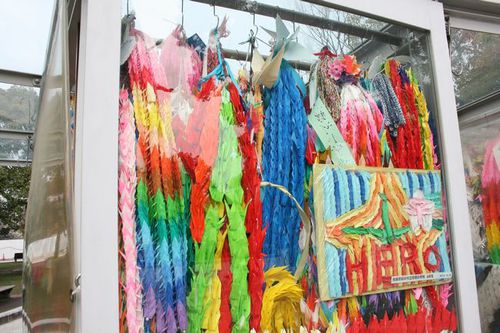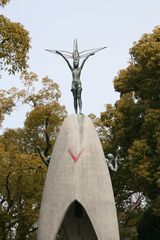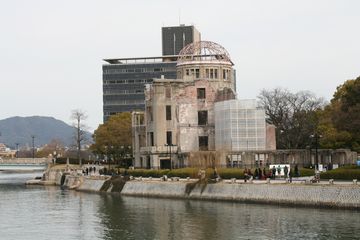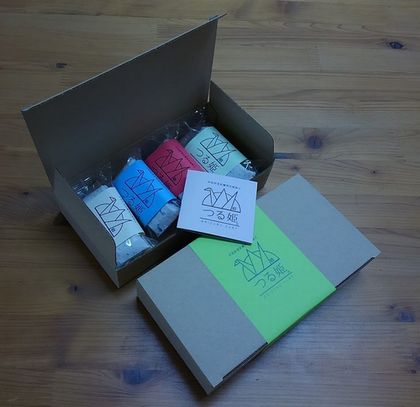May 23, 2016
Passing on the Wishes for Peace Embodied in Paper Cranes
Keywords: Civil Society / Local Issues NGO / Citizen

Copyright Hiroshima City All Rights Reserved.
More than 70 years have passed since an atomic bomb was dropped on Hiroshima. In Hiroshima's Peace Memorial Park, there is a statue called Children's Peace Monument. Even now, millions of hand-folded paper cranes are sent to the statue from around the world with a wish, prayer, dream and hope for peace. Currently, a number of initiatives are being carried out to spread these wishes for peace by transforming the cranes into something else.
The model for this statue was Sadako Sasaki. Sadako was exposed to nuclear radiation from the bombing when she was two years old, but didn't have any injuries and grew up in a healthy manner. Nine years later, however, she suddenly showed signs of disease and was diagnosed with leukemia. She heard that anyone who folds one thousand paper cranes can get over an illness. So, she folded crane after crane after crane from wrapping paper and other materials, wishing for recovery. After an eight-month struggle, her short life came to an abrupt end.
Sadako's story inspired a movement to create a monument dedicated to building peace and consoling the souls of children who died from the atomic bombing. As a result, the Children's Peace Monument was built in the Peace Memorial Park, with money collected through fundraising efforts across Japan.
The story spread worldwide through a picture book and animation titled, "Sadako and the Thousand Paper Cranes." Today, paper cranes have become a symbol for people around the world fighting for the abolition of nuclear weapons and lasting world peace. Every year, the monument receives more than 10 million paper cranes, totaling more than 10 tons in weight.


Copyright Hiroshima City All Rights Reserved.
Hiroshima City decided that in order to value and respond to the wishes for peace embodied in these paper cranes, it was important to share them with more people. The city launched a program to transform the cranes into a resource for other initiatives. To ensure that the program would take root as a civic activity, the city decided on a format wherein citizens suggest ideas and the city supports their implementation.
"Orizuru Peace Relay" Peace One, a non-governmental organization (NGO), is engaged in creating bags of sets containing seven paper cranes and a message. The message says, "We hand over to you the strong wish for peace embodied in each of these seven paper cranes. Please pass the cranes out to your family, friends, and neighbors with words of wishes."
The sets of seven cranes and a message are distributed mainly to visitors of the Hiroshima Peace Memorial Museum for free. People who receive the set are expected to give a paper crane to a person close to them. In this way, paper cranes are passed from person to person as "messengers for peace," circulating wishes for peace around the world.
Meanwhile, Universal Post Inc., a Hiroshima-based company that provides promotional, advertising, and public relations services, recycles the paper cranes into a material for paper clay. Pulp fiber, part of the material, is 100 percent recycled from paper cranes. The paper clay, named Tsuruhime ("crane princess"), has been used by everyone from small children to seniors for the enjoyment of creating handmade crafts.

More than 100 individuals and groups have implemented an initiative to transform the paper cranes for other ends. The initiatives are taking place not only in Hiroshima City but in other municipalities in Hiroshima Prefecture, other parts of Japan, and other countries as well.


